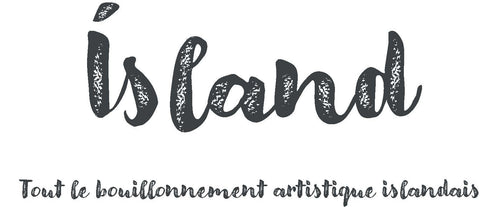How can a country with fewer than 350,000 inhabitants generate such a profusion of musicians—120 local bands for the 2022 edition of the Icelandic Airwaves festival alone, not to mention the off-the-beaten-path programming that can be found at a bar or a bookstore?
Of course, we find certain musicians in several groups, often from very different registers, but still...
Long winter nights, no doubt, boredom of life far from the Reykjavik metropolitan area, perhaps, but still...
When asked about this, my Icelandic friends shrugged: "Music is taught at school as seriously as other subjects, so we practice it naturally." And there you have it!
Another surprise: the diversity of genres represented. The influence of the exploratory Björk is not so obvious, that of the UFO Sigur Rós even less so, the metal scene - perhaps a link with Denmark - is present but not overwhelming. But going to Airwaves and browsing the aisles of the record stores (no less than 7 in the center of Reykjavik alone) is to listen to feminine and feminist punk ( Hórmónar ), rap influenced by Wu Tan Clan (Cell7) , experimental music influenced by pop ( Ólöf Arnalds ) or classical ( Ólafur Arnalds ), heirs of Simon and Garfunkel ( Árstíðir , one of whose musicians plays in a metal band), others from the lyrical period of Radiohead ( CeaseTone, whose singer is also a musician for a rapper, JÓIPÉ ), bouncy or melancholic pop, very varied jazz, and even reggae and bossanova in Icelandic!
But all of this could make for bad music, or at least not great, or not innovative… except it doesn't.
The Icelandic music scene is prolific, high-quality and daring.
There are some bands here and there that are clearly not mature, some artists who wouldn't look out of place in the top 50 of the Anglo-Saxon mainstream, but the general level is surprisingly high and it's not rare to see teenagers giving a set in a bar or a sports store, between two racks, with the conviction that we imagine having animated the punk movement in its beginnings.
The Icelandic Rock Museum, west of Reykjavik, bears witness to a history that largely passed under the radar of our specialist press until the turbulent Sugarcubes ( Björk 's first band from 1986 to 1992), and in particular the arrival on the island of the first electric guitar, during the Second World War thanks, so to speak, to the British and then American military presence (Iceland never had an army and the American base only withdrew in 2006); this British influence (and even more precisely Scottish, Glasgow being another musical bastion, the two cities also sharing a love of football and beer) would give rise in the 80s to a punk wave as brief as it was wild.
Being naturally drawn to British pop rock from the 70s to the 90s (the Inrocks generation, in short), Reykjavik is the place where I venture without hesitation into territories far from my bases.
The aim of these few images is to capture the energy, the vibration of these artists, of whom I have only selected the least known in France, most of whom do not tour outside Iceland, or only in Scandinavia.























